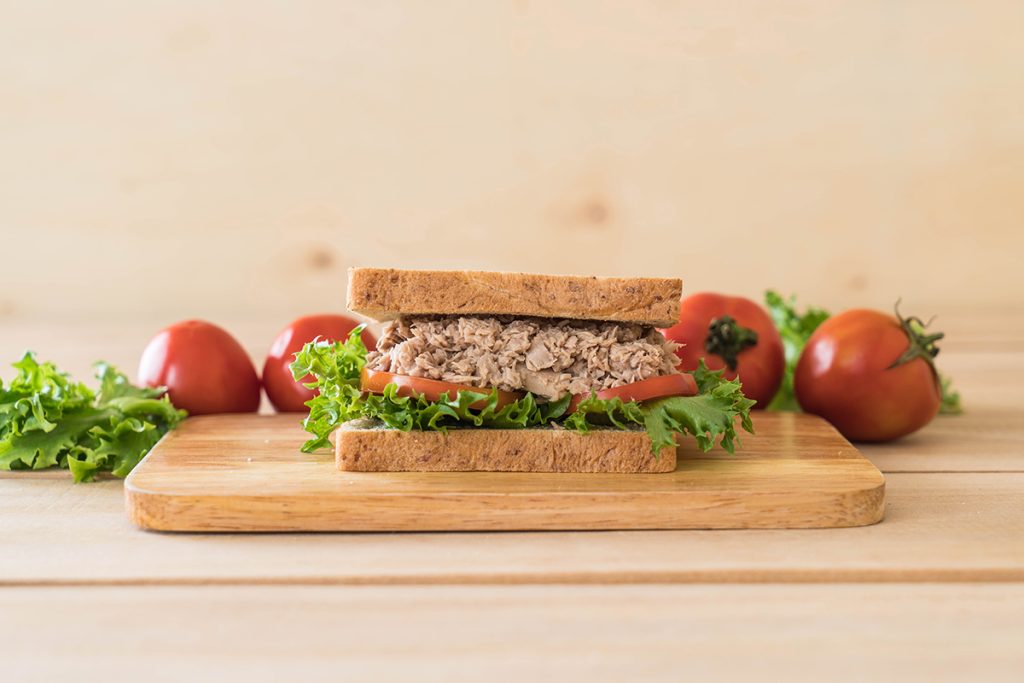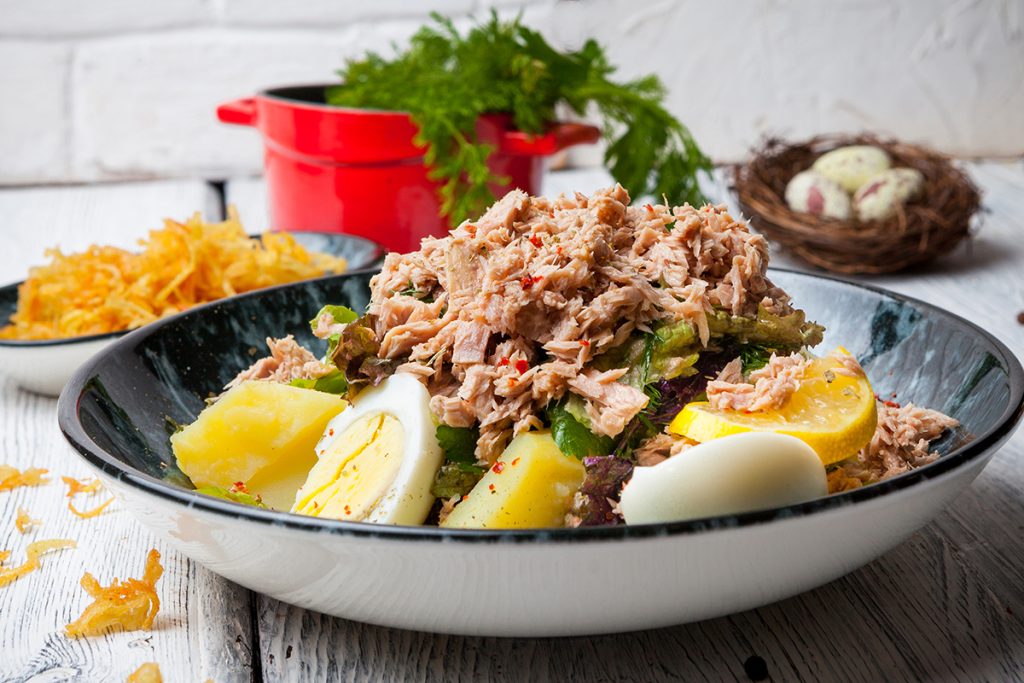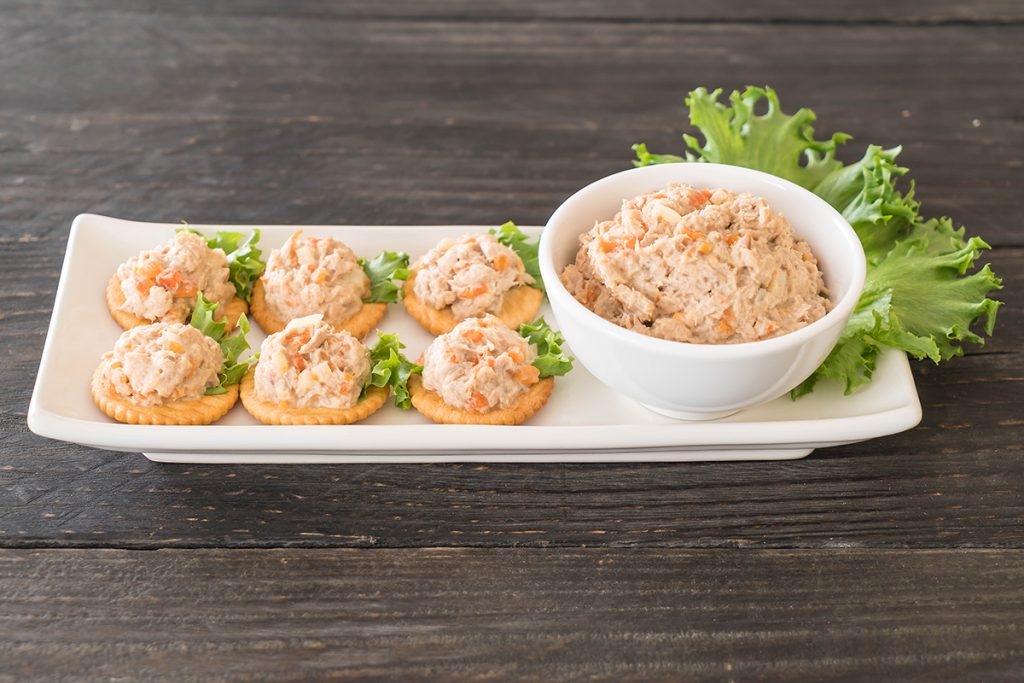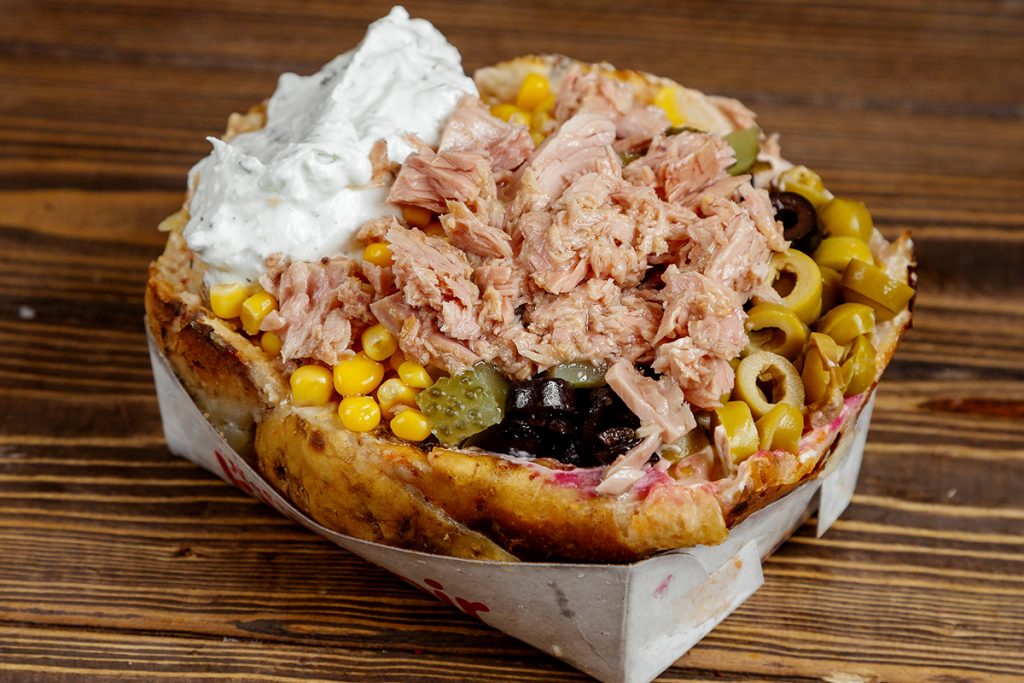Why not create a healthy meal with tuna canned in oil

Have you ever found yourself standing in front of the canned fish section at a grocery store, uncertain about whether to select tuna canned in oil or tuna packed in water? You’re not alone. Unless you’ve taken the time to explore the distinctions between the two, it can be a somewhat daunting decision. However, if your primary consideration is flavor, the general recommendation is to opt for tuna canned in oil.
So, what sets these two options apart?
Feeling uncertain? Just take two cans of the same brand and compare them side by side – one filled with oil, the other with water. Tuna canned in oil not only boasts a more intense flavor but also offers a luscious, silky texture, thanks to the thick viscosity of the oil that keeps the tuna moist.
In contrast, water-packed tuna is noticeably less flavorful and tends to be drier (try flaking it with a fork, and you’ll see the difference). If you’re aiming for a more indulgent tuna experience, the choice becomes quite clear.
Tuna canned in oil elevates some of tuna’s most beloved dishes, such as the classic French Niçoise salad, and even culinary expert Ina Garten concurs that oil-packed tuna is the ideal choice for making cheesy, delectable tuna melts.

Don’t drain it, but retain it
In addition to delivering a more intensely flavored profile due to its rich coating of oil, oily tuna also boasts a higher fat content, approximately double that of water-packed tuna, as reported by nutritians & dieticians.
This higher fat content contributes to increased satiety, leaving you feeling full for a longer duration while maintaining lower cholesterol levels. However, it’s worth noting that specific fat content can vary among brands, so it’s advisable to scrutinize the nutrition label for precise details.
When it comes to preserving the valuable omega-3 fatty acids found in tuna, incorporating the oil from the tuna can into your dish, rather than draining it, can be beneficial. A study conducted by Public Health Nutrition indicated that water-packed tuna retained more of its omega-3 polyunsaturated fatty acids (PUFA) compared to tuna canned in oil, but this held true only when the water-packed variety was drained.

This phenomenon can largely be attributed to the fact that fat molecules are attracted to each other, while water and oil repel one another. Consequently, when you drain water-packed tuna, the omega-3s remain intact.
However, when tuna canned in oil is drained, those same oil-soluble fatty acids mix with the olive oil and are subsequently discarded. Thus, by refraining from draining the oil-packed tuna, you can retain these essential fatty acids.
Furthermore, the study observed that oil-packed tuna contains higher levels of omega-6-rich linoleic acid (LA) and α-linolenic acid (ALA). Additionally, according to the U.S. Department of Agriculture, tuna packed in oil offers increased quantities of vitamin D and selenium compared to its water-packed counterpart. Abundant in both nutrition and flavor, it turns out that tuna canned in oil can be quite a luxurious choice!

Examples of some nutritious tuna meal ideas
If you’re seeking inspiration for what to prepare with tuna, you’re in for a culinary treat. Tuna canned in oil offers a versatile canvas for crafting delicious dishes that go beyond the classic tuna salad with red onion, celery, mayonnaise, mustard, lemon, parsley, and capers. Here are some delectable options to consider:
- Spaghetti featuring tuna, tomatoes, capers, and basil.
- A pan bagnat sandwich featuring tuna, anchovies, and parsley.
- A vibrant salad combining tuna, asparagus, and new potatoes, dressed with chive vinaigrette and garnished with fried capers.
- Spaghetti infused with the flavors of tuna, cherry tomatoes, black olives, fresh parsley, olive oil, and lemon juice.
- Farfalle pasta complemented by a savory tuna and rosemary mushroom sauce.
- The ultimate tuna melt sandwich, enhanced with zesty pickles and gooey melted cheddar cheese.
All of these appealing meal suggestions illustrate how versatile tuna can be in your culinary arsenal.

Why not create a healthy meal with tuna canned in oil conclusion
Now that you’re aware, opening a can of tuna presents a convenient lunch or dinner solution! It serves as a speedy and uncomplicated option for lunch, a snack, or even a straightforward family dinner. Moreover, the oil from the tuna can can easily be repurposed for marinating the fish, crafting a sauce, or enhancing a flatbread.
However, the paramount message to convey is that tuna canned in oil is a nutritious food source abundant in protein and enriched with essential vitamins and minerals, including B-Complex vitamins, Vitamins A and D, along with iron, selenium, and phosphorus. Tuna is also a valuable source of healthy omega-3 essential fatty acids in the form of DHA and EPA.
Additionally, its shelf-stable nature enables individuals residing far from coastal regions to incorporate fish into their diets. So, why not explore the incorporation of oil-packed canned tuna into your meals and snacks, taking advantage of the numerous healthful tuna recipes readily available?



















